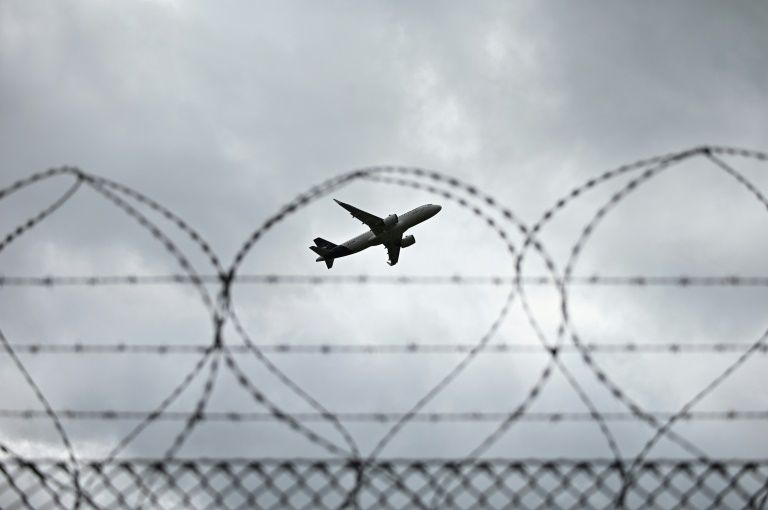Airlines improvise gradual liftoff as lockdowns ease
()
With the peak of the virus crisis over in Europe, Germany’s Lufthansa is plotting a new liftoff. ©AFP/File Tobias SCHWARZ
Cabin crews on standby with destinations revealed only hours before the flight, pilots put on simulators to keep up to date — an airline restarting after the pandemic is a far cry from the clockwork precision of the pre-coronavirus world.
“Flexibility” is the top priority, said Lufthansa chief executive Carsten Spohr last week, as the airline has “developed completely new procedures in flight and route planning”.
As borders slammed shut to halt virus transmission, about 90 percent of passenger connections at the German airline fell away, leaving an “emergency” timetable comparable to the 1950s.
Daily passengers dwindled to 3,000 from its usual 350,000.
With the peak of the crisis over in Europe, the airline is plotting its restart — and the entire operation has been forced to act more nimbly to cope.
For Lufthansa crews, the inch-by-inch progress means “they have almost no fixed shifts any more, only on-call periods”, Spohr said.
“They know how quickly they have to make it to the airport and that they should be nearby, and then they get a few hours’ notice about where they’re going.”
“Methods we’ve always used to patch over problems have become the standard,” he added.
Some flights, like the first India-bound service, have been dropped almost at the last moment for lack of landing authorisation.
– High hurdles –
In other cases “colleagues all at once had to add a second flight in parallel” to meet high demand — including on a busy May holiday weekend when “I myself and our family” were on a waiting list, Spohr said.
“Historic data we’ve gathered over decades are useless for flight planning in the near future,” said chief financial officer Thorsten Dirks, explaining that Lufthansa’s “artificial intelligence has to be re-trained” to address the altered situation.
“In these cases, human beings are faster and more flexible.”
Flight and cabin crew on standby through the period must also be kept up to date.
Some pilots have been flying simulators to stay in touch, while other airlines like Senegal’s Transair have been operating empty flights to maintain pilots’ licences.
Around 700 of Lufthansa’s 763 aircraft were grounded at the peak of the lockdowns, parked in orderly rows on the apron of Frankfurt airport — and even taking up one of the runways.
Lufthansa is keen to get them up in the air as a longer out-time means more technical work to get them flying again.
After up to three months of inactivity, planes “can be reactivated in one or two days”, Lufthansa spokeswoman Lara Matuschek said.
Any longer time out means placing them into “deep storage”, with steps like antibacterial treatments for the empty fuel tanks.
“There are much higher hurdles to reactivation” from deep storage, and “it can take up to four weeks” as more extensive maintenance work may be needed, Matuschek explained.
– ‘Exciting time’ –
From early June, the German juggernaut has been offering more routes, aiming to serve 90 percent of short-haul and 70 percent of long-haul destinations by September.
But it will only offer around 40 percent of its usual capacity and has been forced to turn to Berlin for a nine-billion-euro ($10.1 billion) bailout.
“Our main aim was to connect major German and European cities to our hubs” like Germany’s biggest airport Frankfurt, hoping also “to fly to strong tourist destinations”, Matuschek told AFP.
In the Far East, Singapore Airlines expects “two days to a week” to reactivate aircraft.
The carrier will offer 12 additional destinations in June and July, but its network remains pared back with just 32 of its normal 135 routes and six percent of pre-pandemic capacity.
In Japan, a gradual journey back to normal has begun for JAL and ANA, with the latter offering 30 percent of normal flights in June after 15 percent in May.
Meanwhile, Lufthansa’s call centres have been burdened with cancellations and re-bookings, with reimbursements alone running into hundreds of millions of euros per month.
“The more we bring the system back online, the more efficient we have to become,” Spohr said.
“But you can’t work this way in a company our size and hope to make money.”
Yann SCHREIBER
(AFP)
Disclaimer: Validity of the above story is for 7 Days from original date of publishing. Source: AFP.


